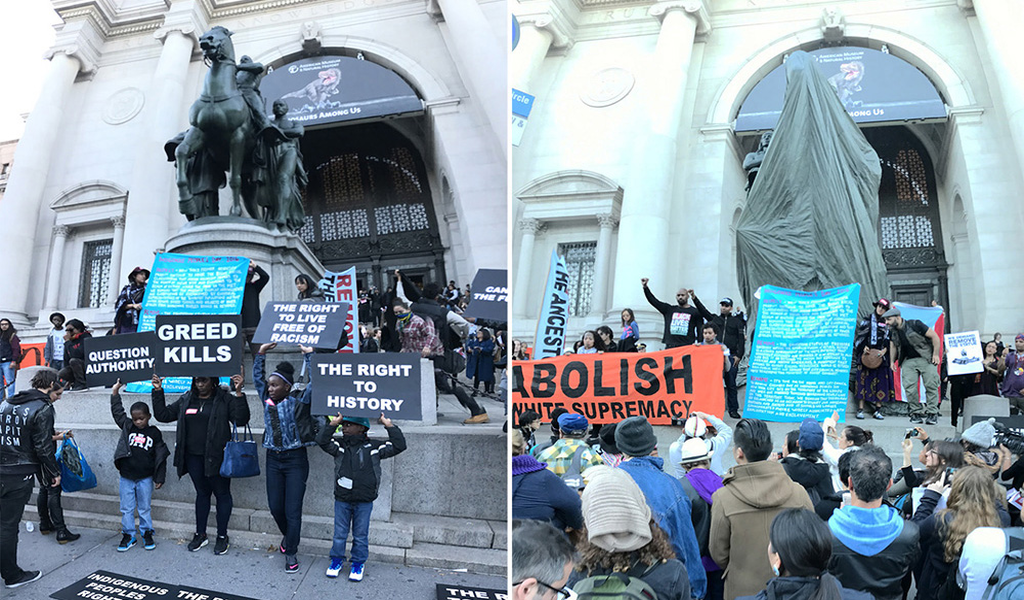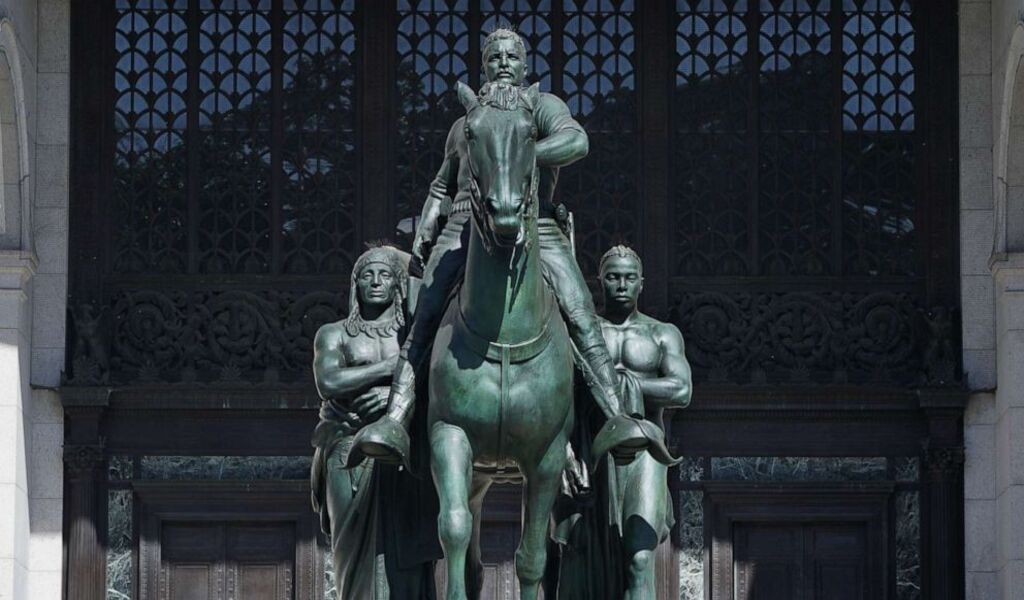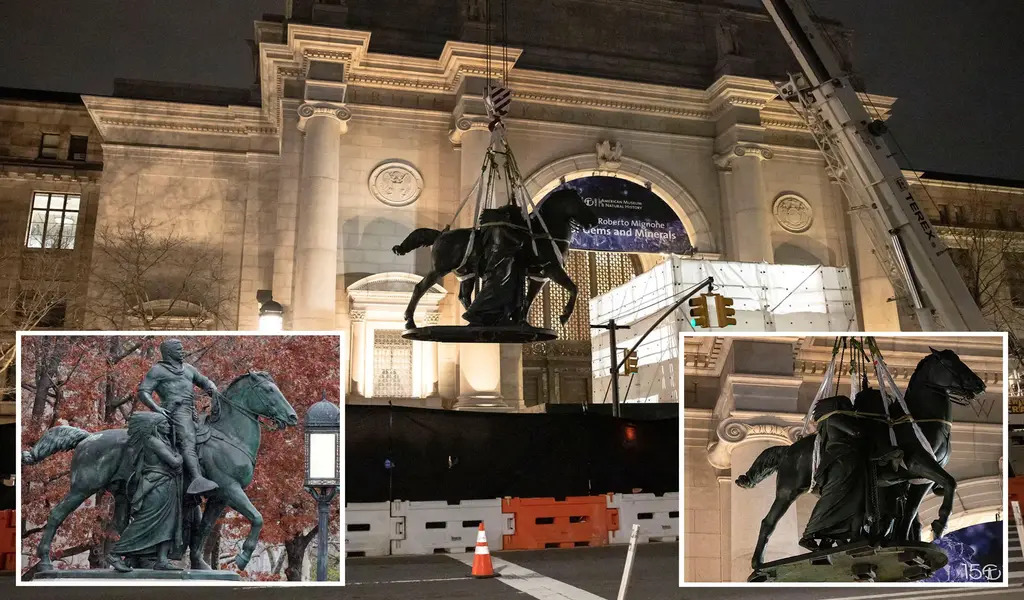News
Top Museum In New York Takes Bold Step By Removing Human Remains From Collections

(CTN NEWS) – The American Museum of Natural History in New York has decided to remove all human remains from its display collections.
This decision is based on a reform of the museum’s collection practices, acknowledging that these practices were “deeply flawed.”
The move reflects a growing recognition within the museum community of the need to reassess the ethical implications of displaying human remains, particularly those of Indigenous peoples and other marginalized groups.
The American Museum of Natural History, one of the leading natural history museums in the United States, is planning a comprehensive overhaul of its collection of around 12,000 human remains.
This collection includes the skeletons of indigenous people and enslaved individuals, some of whom were obtained through grave robbing, as well as the remains of New Yorkers collected as recently as the 1940s.
Museum president Sean Decatur emphasized the role of extreme imbalances of power in the creation of human remains collections.
This acknowledgment highlights the historical exploitation and disregard for the rights, cultures, and dignity of the individuals whose remains were collected.
By confronting this history and taking steps to rectify past wrongs, the American Museum of Natural History aims to work toward a more equitable and responsible approach to its collections, one that respects the rights and beliefs of the communities affected by these practices.
Sean Decatur’s statement further acknowledges that many researchers in the 19th and 20th centuries used these human remains collections for the advancement of scientific agendas based on white supremacy.
This involved attempts to identify physical differences among populations that were often misused to justify and reinforce racially discriminatory and harmful beliefs, such as models of racial hierarchy.
By recognizing these deeply flawed practices of the past, the museum is taking a significant step toward addressing historical injustices and rectifying the misuse of human remains for such purposes.
The American Museum of Natural History’s decision to reform its collection of human remains is part of a broader trend in many U.S. medical and anthropological institutions.
Other institutions, like the Mütter Museum in Philadelphia, the Peabody Museum at Harvard University, and the Penn Museum in Philadelphia, have also been grappling with similar issues related to their collections of human remains.
Some of these institutions have had to address the problematic nature of their collections, especially those that include skulls and remains of Black and indigenous individuals, and have issued apologies for their past practices.
This reflects a broader reevaluation and reckoning with the ethical and historical implications of collecting and displaying human remains.
The American Museum of Natural History has outlined new policy guidelines, including the removal of human remains from its display collections, improvements in how these remains are stored, and an increased commitment to resources and efforts dedicated to determining the origins and identities of these remains.
These policy changes are part of the museum’s efforts to rectify past collection practices that were deeply flawed and rooted in power imbalances, as well as to acknowledge and address the harmful historical use of human remains in advancing flawed scientific agendas linked to white supremacy and racial hierarchy models.
The Native American Graves Protection and Repatriation Act (NAGPRA), which has been in place for three decades, mandates that institutions return Indigenous human remains.
However, many institutions have faced challenges in correctly identifying these remains, which has hindered the repatriation process or, in some cases, made it nearly impossible to identify the origins and rightful owners of these remains.
The American Museum of Natural History has successfully repatriated about 1,000 Native American remains, but they still hold 2,200 more.
Efforts to conduct further study to accurately determine the origins and rightful owners of these remains have drawn criticism from various quarters.
Sean Decatur, who became the president of the American Museum of Natural History in April, emphasized the importance of identifying restorative and respectful actions in consultation with local communities as part of the museum’s commitment to address the issues related to human remains in its collection.
Indeed, many of the human remains in museum collections were gathered without the consent of the individuals involved, and they were often used to support discredited scientific theories, including eugenics.
These actions were unethical and have caused significant harm to the communities from which the remains were taken.
The museum’s decision to reassess and reform its collection practices is a step toward acknowledging this historical wrongdoing and taking measures to address it.
The presence of these human remains in the museum’s collection vaults, including the bodies of poor New Yorkers from the 1940s and the bones of Black adults dug up from an enslaved people’s cemetery in 1903, highlights the troubling history of collecting and displaying human remains without consent.
The decision to remove such remains and to improve the practices related to their storage and identification is an important step toward rectifying these past injustices and respecting the dignity of the individuals involved.
President Sean Decatur’s statement about the legacy of dehumanizing Black bodies through enslavement and the continuation of that dehumanization through the scientific use of their remains highlights the deeply troubling and racially biased history of such practices.
Acknowledging this history and taking steps to rectify it are crucial for moving towards a more just and equitable future.
It’s important for institutions like the American Museum of Natural History to engage in a process of reflection, evaluation, and reform when it comes to their collections, especially those that involve human remains.
This shift in their approach to human remains, as well as their commitment to working with communities and addressing past injustices, is a positive step towards a more ethical and responsible management of their collections.
It’s a significant acknowledgment by the museum’s director that the ethical concerns related to the display of human remains outweigh any potential benefits to the goals and narrative of their exhibitions.
This recognition is aligned with a growing understanding of the need to treat human remains with respect, particularly when they are linked to past injustices and flawed scientific practices.
MORE RELATED NEWS:
EU Regulators Delay Approval For Novavax’s Variant-Tailored Covid-19 Vaccine
Ex-F1 Boss Bernie Ecclestone Given Suspended Sentence After Pleading Guilty to Fraud
Another 6.3 Magnitude Earthquake Strikes Western Afghanistan, Adding To Recent Tragedies































